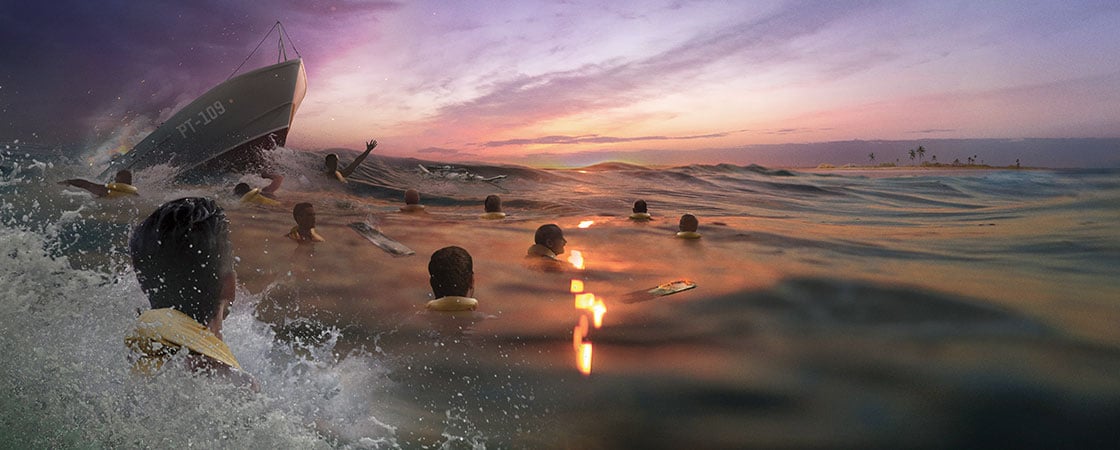As the sun rose on August 2, 1943, 11 American sailors bobbed in the blue-green water of the South Pacific. They clung to a sinking chunk of what had been their boat.
Several of the men were wounded. They had no radio or medical supplies, no food or fresh water. And the most pressing danger? They were inside enemy-held territory, drifting between islands that were home to Japanese military bases.
The crew’s commander, 26-year-old Lieutenant John Kennedy, considered his severely limited options. The men could fight—but with only a few pistols and knives between them, they’d never hold off an attack. They could surrender—and take their chances as prisoners of war. Or they could hide.
In the distance, Kennedy could see the slopes of Rendova Island, the nearest American base. It was 38 miles to the southeast. It might as well have been a thousand.
As the sun rose on August 2, 1943, 11 American sailors bobbed in the blue-green water of the South Pacific. They clung to a sinking chunk of what had been their boat.
Several of the men were hurt. They had no radio or medical supplies, no food or fresh water. And the most pressing danger? They were inside enemy-held territory, drifting between islands that were home to Japanese military bases.
The crew’s commander, 26-year-old Lieutenant John Kennedy, considered his severely limited options. The men could fight—but with only a few pistols and knives between them, they’d never hold off an attack. They could surrender—and take their chances as prisoners of war. Or they could hide.
In the distance, Kennedy could see the slopes of Rendova Island, the nearest American base. It was 38 miles to the southeast. It might as well have been a thousand.

